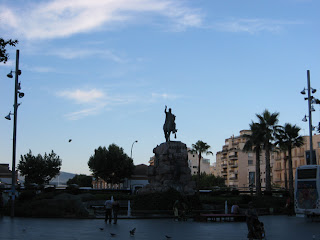When you decide to live in Spain, either you are a EU or non EU citizen, one of the first documents you’ll need is the NIE (Número de Identidad/Identificación de Extranjero). This is a number that is issued to all foreigners living in Spain and it’s necessary if you want to work, open a bank account, start a business, buy or sell goods or properties and almost any form or documentation you’ll fill during your life here will require it. In short, it is your identification number within Spain.
You can request your NIE alone or you will be given one when you request your residency card, which is mandatory if you are staying in Spain longer than 3 months. To submit your request you have to go to any police station with a foreigner’s department. The one in Palma is at the end of Calle Ciutat Querétaro (past the Kristian Krekovic park). There are works in progress at the moment at the Police station, so the best way to get directly to the office you need is to walk around the building and enter from the last door. If you enter from the front door, you can ask the guard, but he’ll give you directions in Spanish only and I actually got lost the first time I was there!
When you finally arrive to the correct office, you’ll enter a first room, where, queuing your way little by little, you’ll reach a quite energetic girl who will give you the documentation to fill in and your number to access the second room. Beware that this Charon will let you pass in the second room only if you have all what’s necessary to file your request. If not, she’ll advise you on what to do and very firmly send you away, even if you have been queuing for hours. So, be prepared!
This is what you need:
NIE
• An application form that you can either download
here or get a copy from Charon and fill it out while waiting.
• A copy of your passport/National Identity card and the original one
• Receipt of the payment of the fee, which can be done in any bank (only the second time)
Residency Card
• An application form that you can either download
here or get a copy from Charon and fill it out while waiting.
• A copy of your passport/National Identity card and the original one
• Receipt of the payment of the fee, which can be done in any bank (only the second time)
• 3 ID size photos
• Any document that will help you prove your residency (if you’re working bring along your contract, if you’re studying, proof that you are registered at the school, etc)
So, my experience was this, as I applied only for my NIE.
I went to the police station once, queued for a while, got the application as well as my number and received admittance in the mystical second room, in which there are only chairs for people waiting and a display where you can see what’s the lucky number being taken care of.
The waiting didn’t seem too long to me, but I might not be reliable, as I enjoyed most of the time reading a book and overhearing a conversation from people in front of me.
And finally it was my turn! I walked up to one of the free attendants, a nice smiling lady: she took my documentation (I had filled the form while waiting), processed my request and provided me with the fee form to be paid. She also advised me to come back another day because I would have had no time to go to the bank to pay the fee and be back to complete my request (there’s a bank not far from the station).
Some say that you need to bring along documentation to produce proofs of the reason you are requesting the NIE, but in my case, when I told the lady I was simply looking for a job in Palma, she asked me to write it in the form and that’s all!
A few days later, with my fees paid, I joined the queue again, same as above, and when I was admitted to the attendant’s desk, it was a guy this time, he checked the fee receipt, printed a sheet of paper with some writings on it and disappeared in search of the police chief to get it signed. After a few minutes I was happily in possess of my NIE, ready to go outside and jump in the Spanish job market!
Concerning the residency card, I didn’t apply for that, but the procedure is the same. The only difference is that it is not issued immediately, but you will be advised when it’s ready and will have to go back to the same police station to receive it. You have to go personally as no one else can get it for you, but the good news is that you don’t have to queue, as there is a dedicated office for that!
If you decide that you don’t fancy at all copying with all this, you can contact one of the many agency that can do the job for you. I can’t suggest any, but you can find many looking up for NIE in any search engine.













 Clearly, a bench
Clearly, a bench offices
offices












